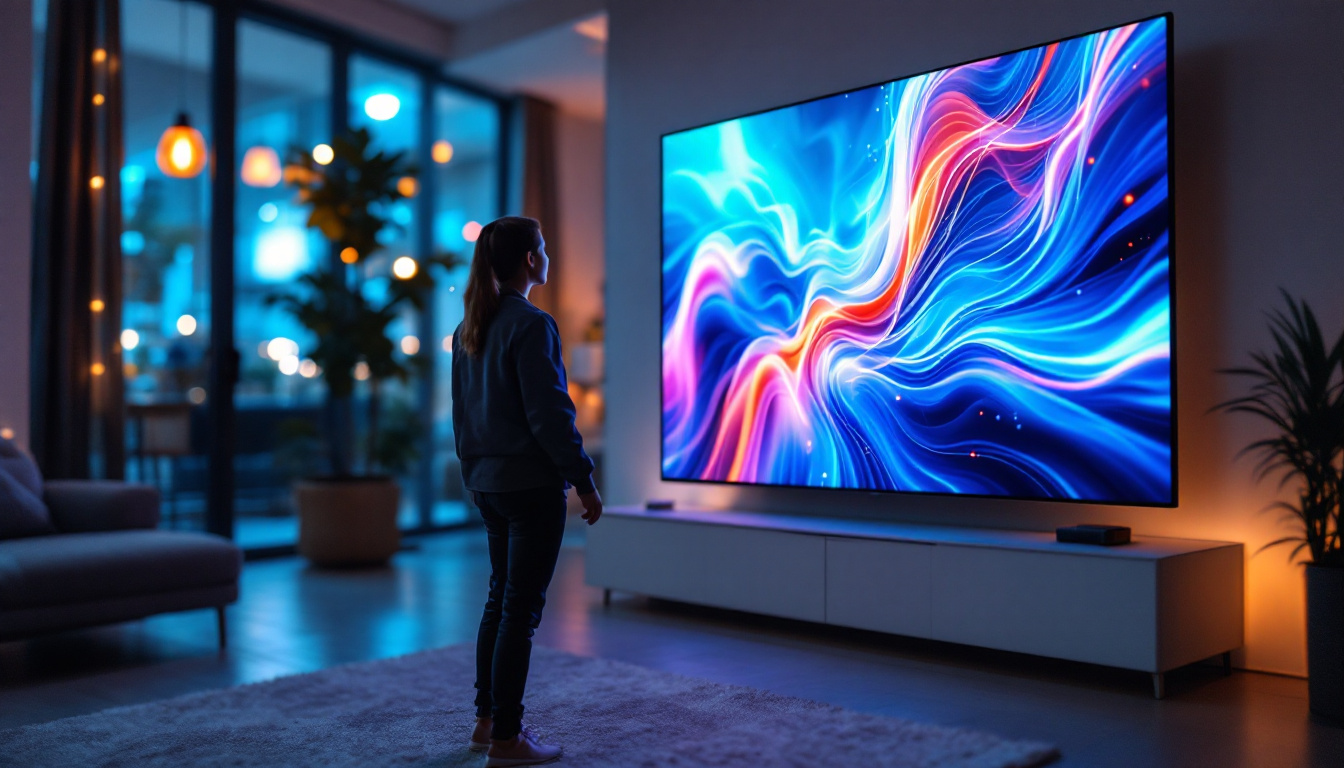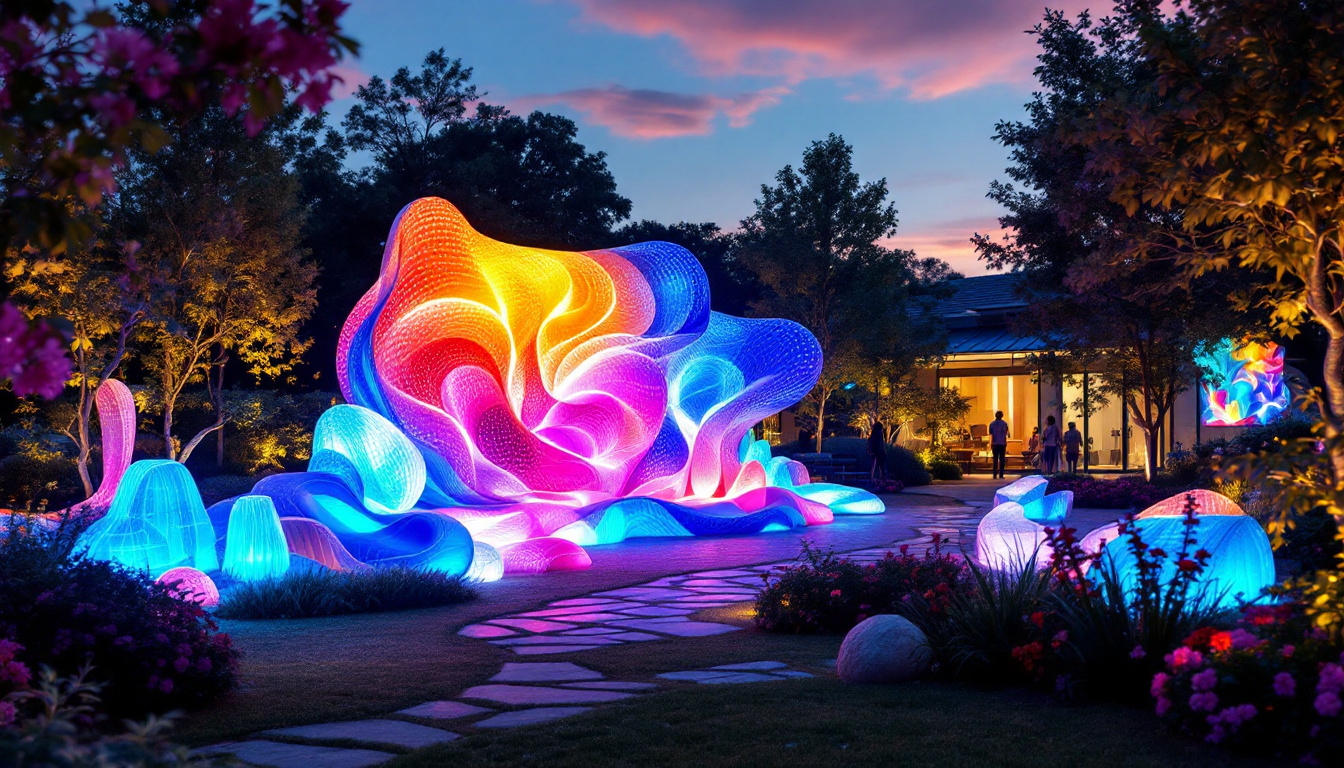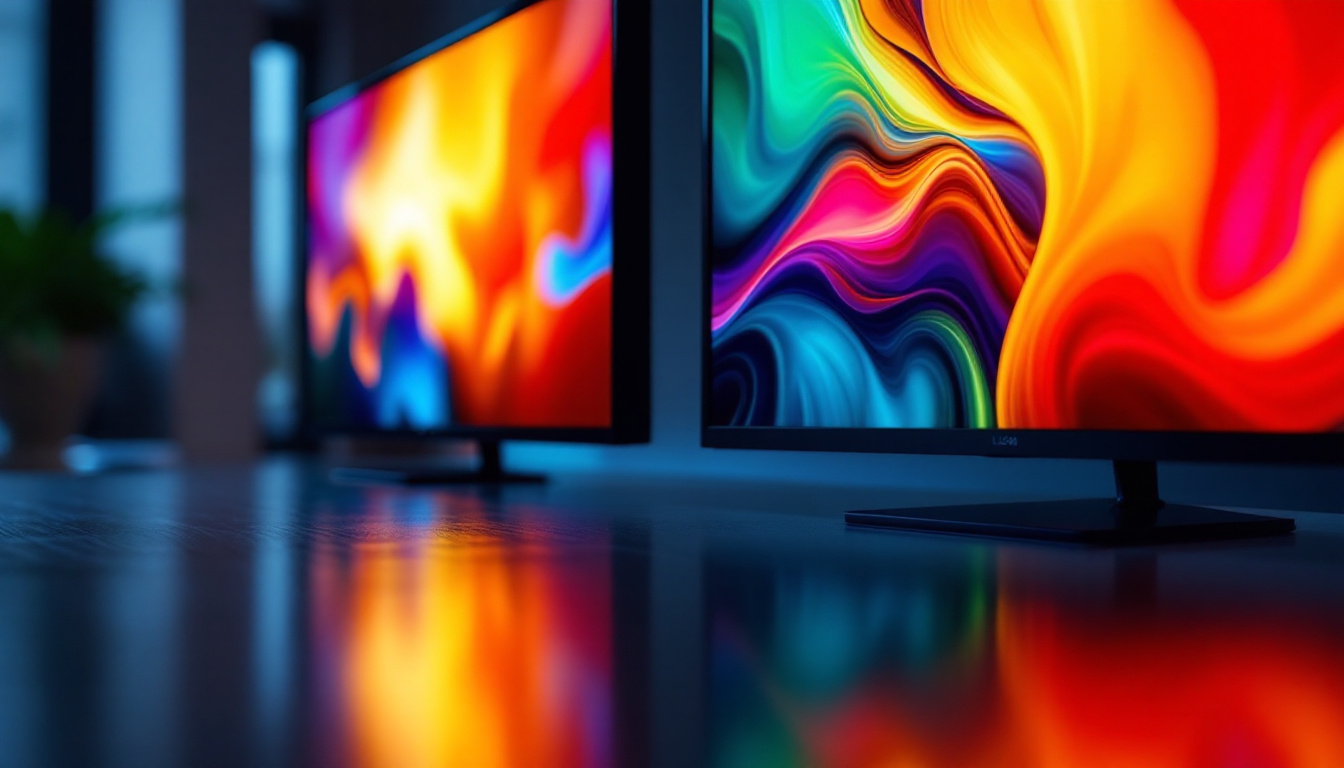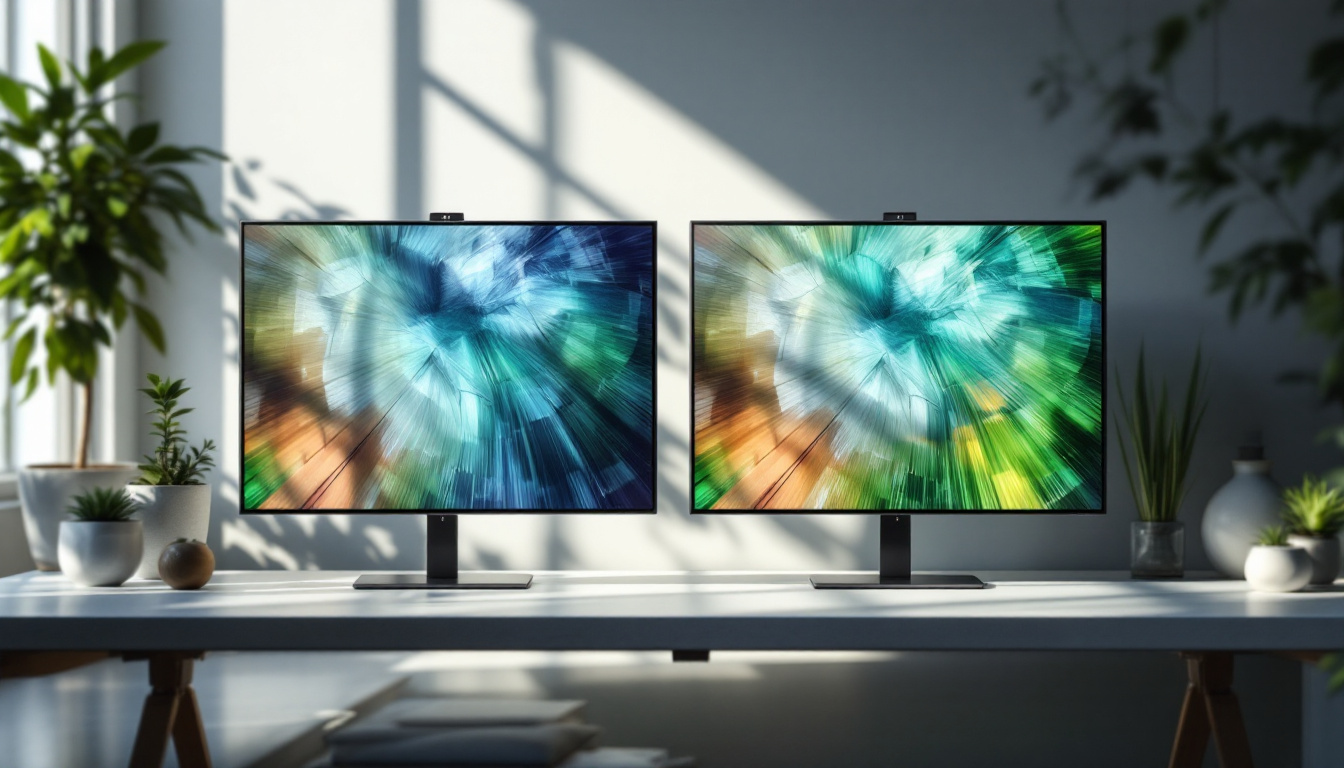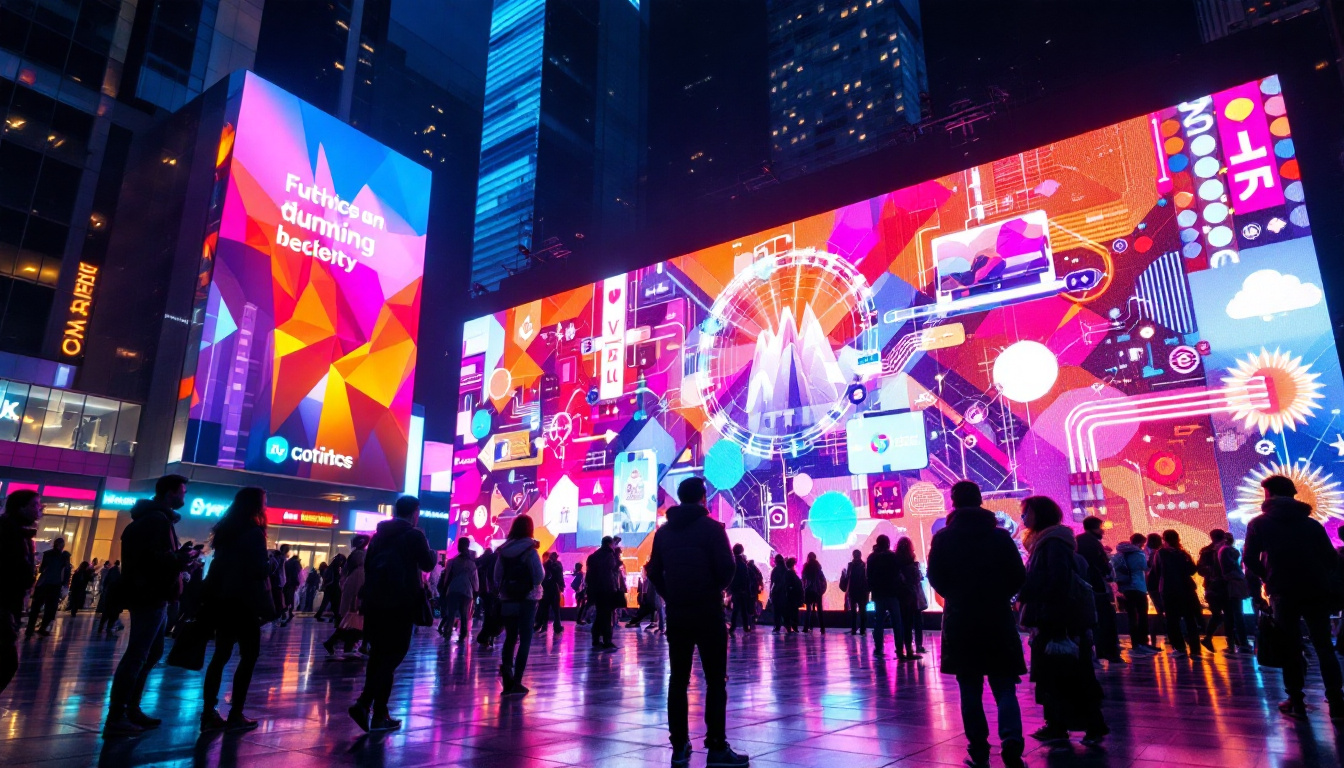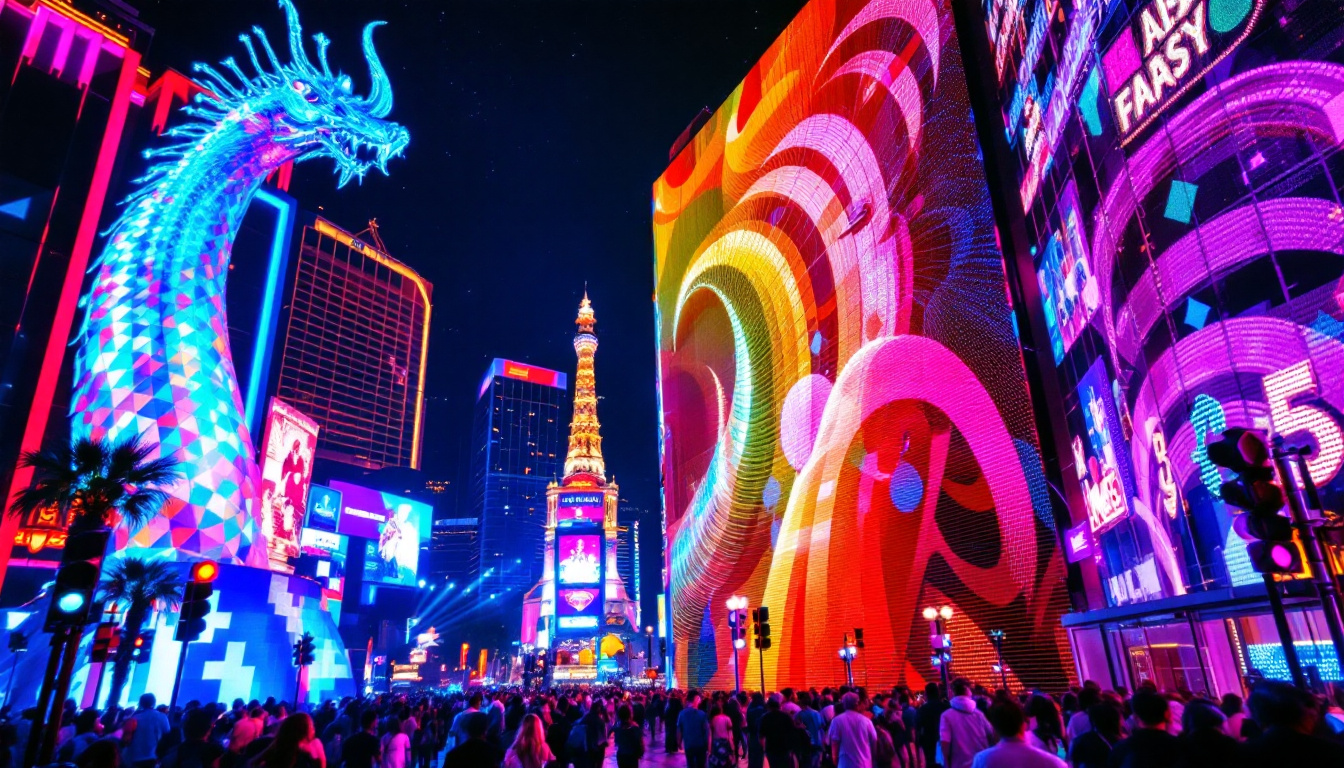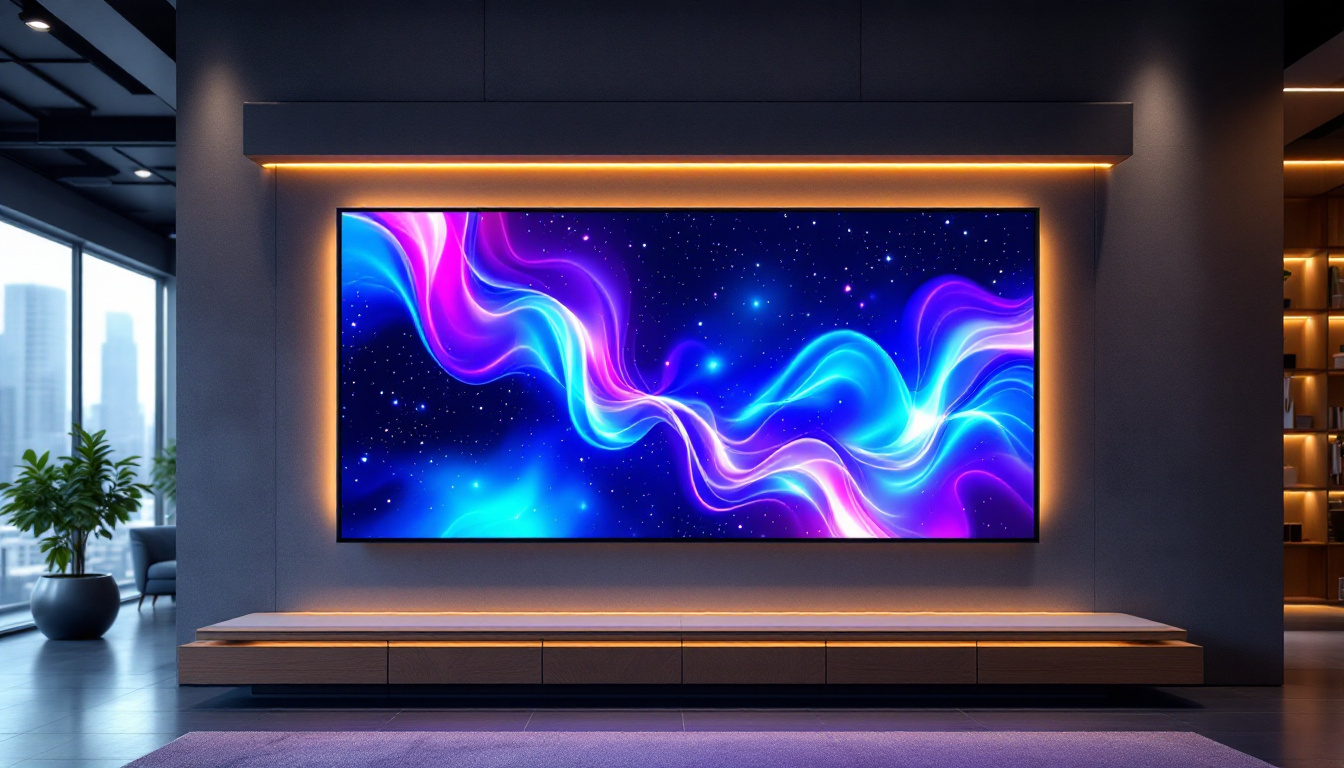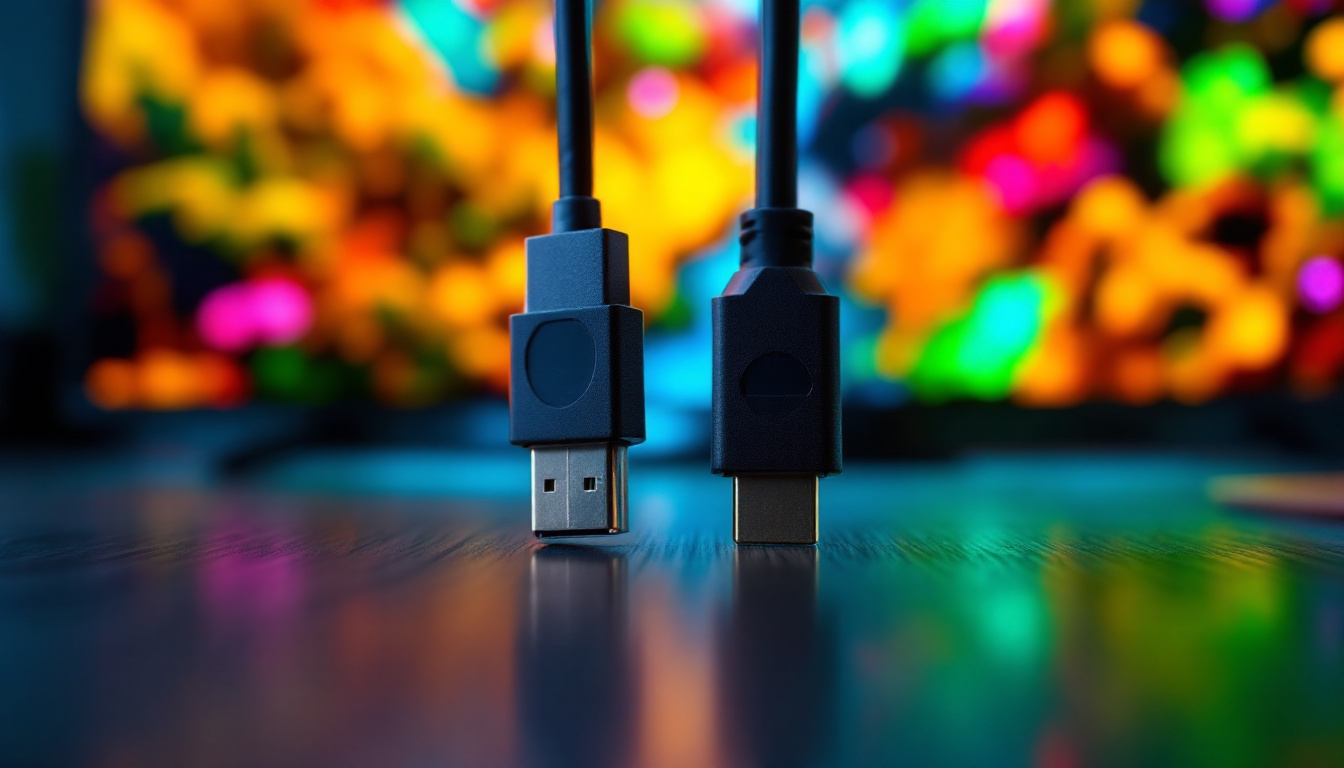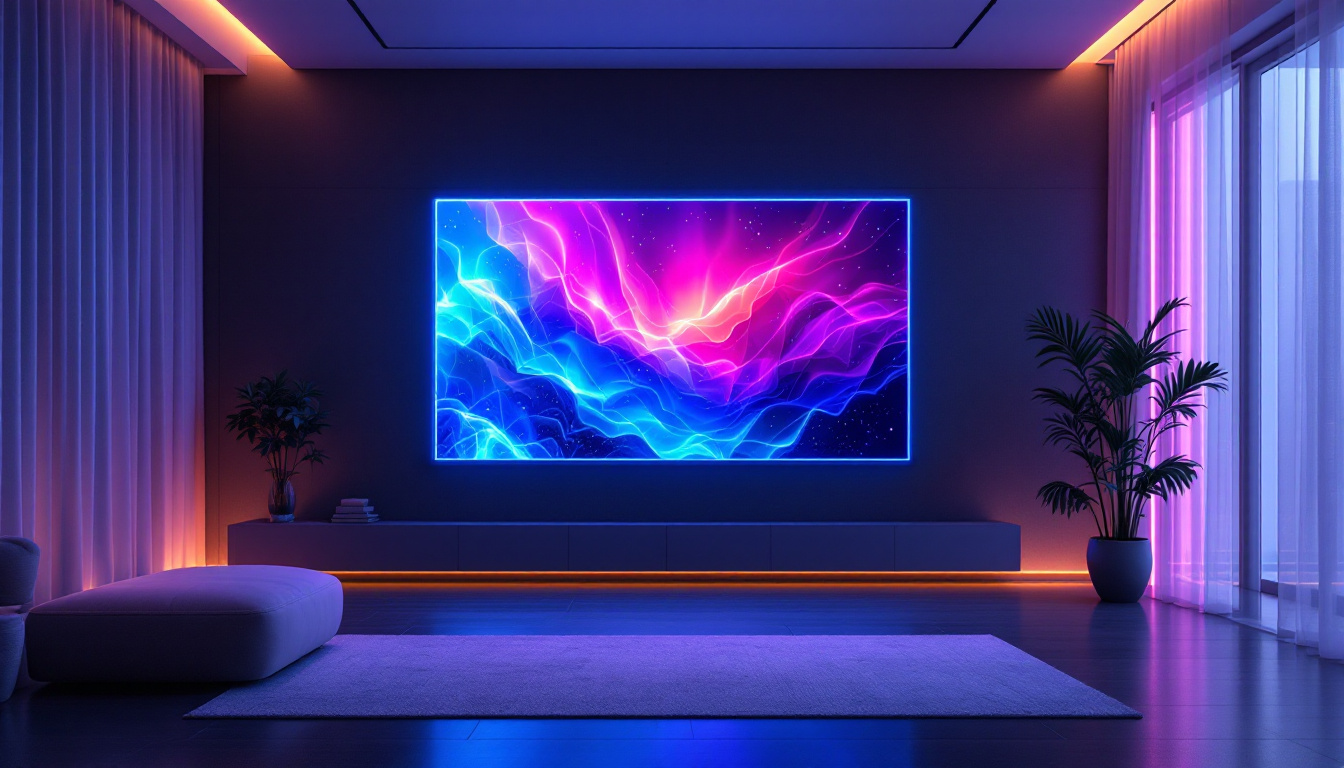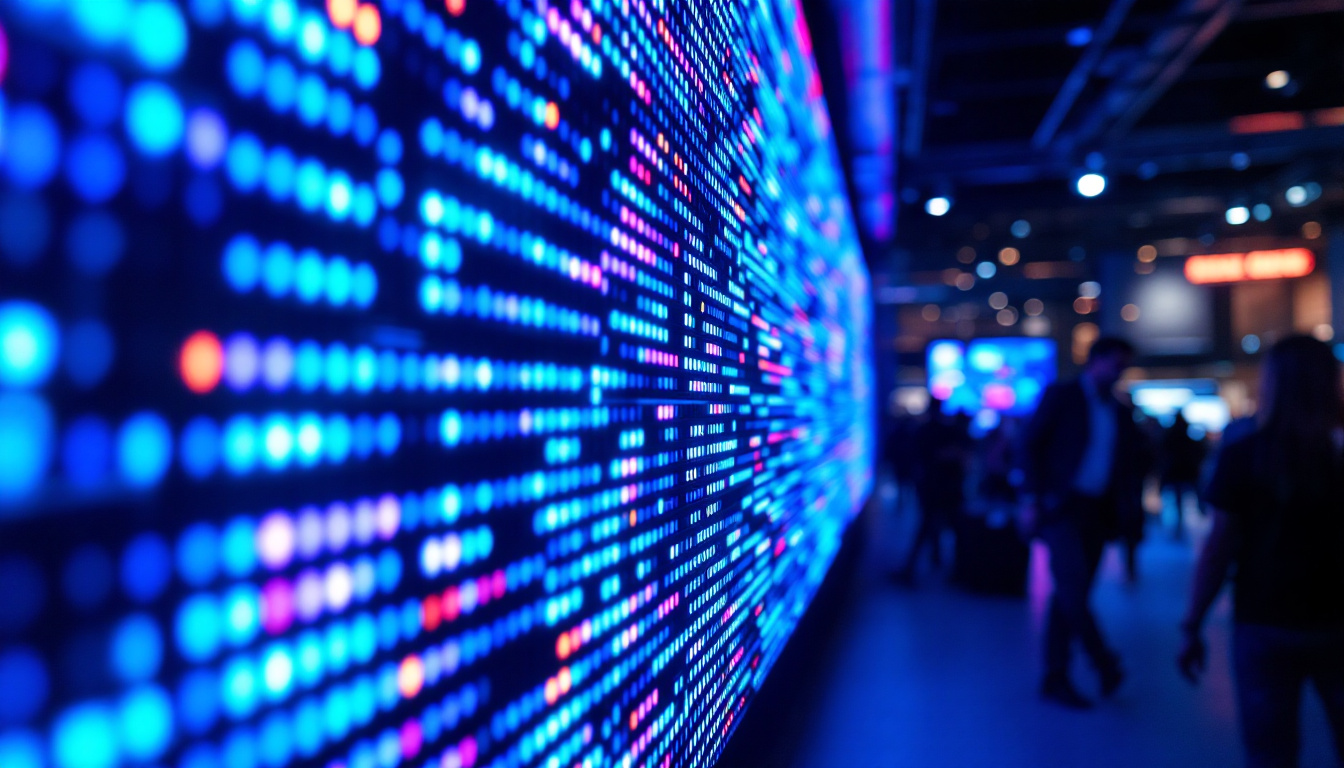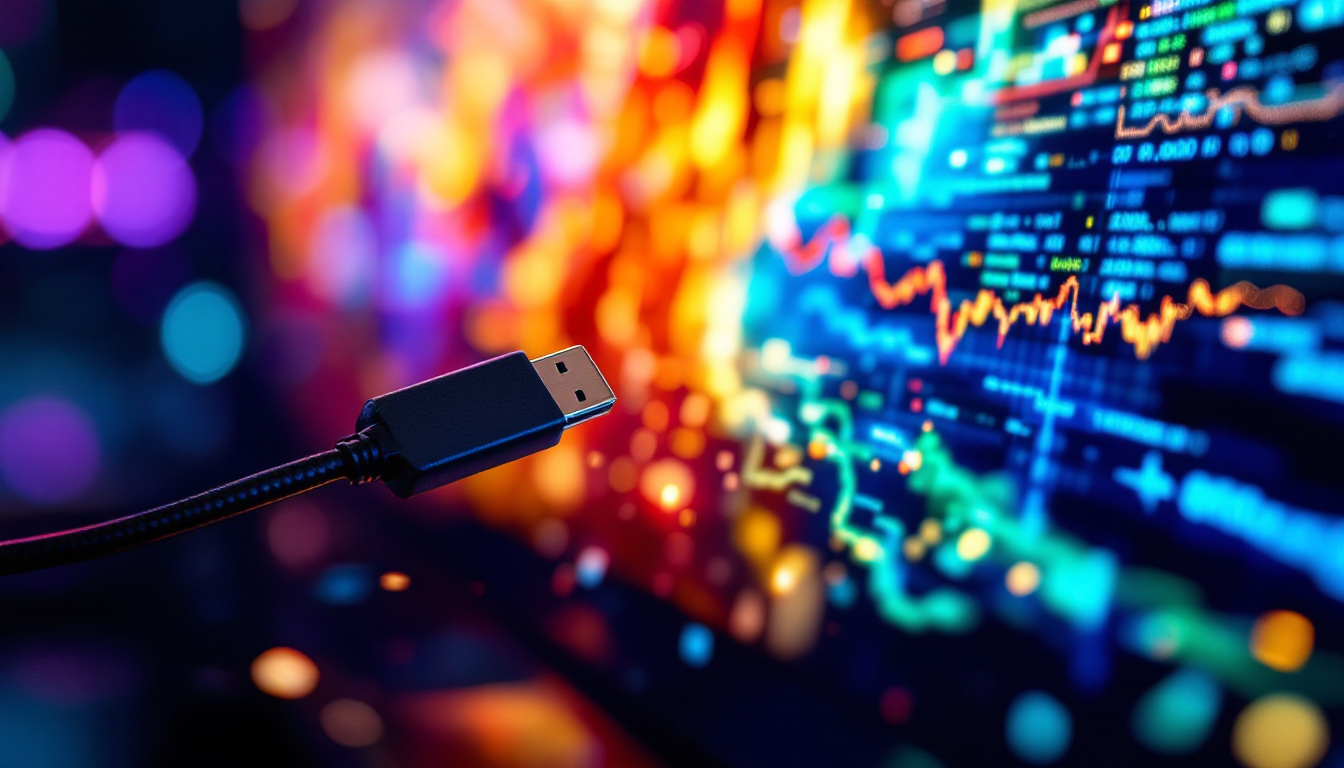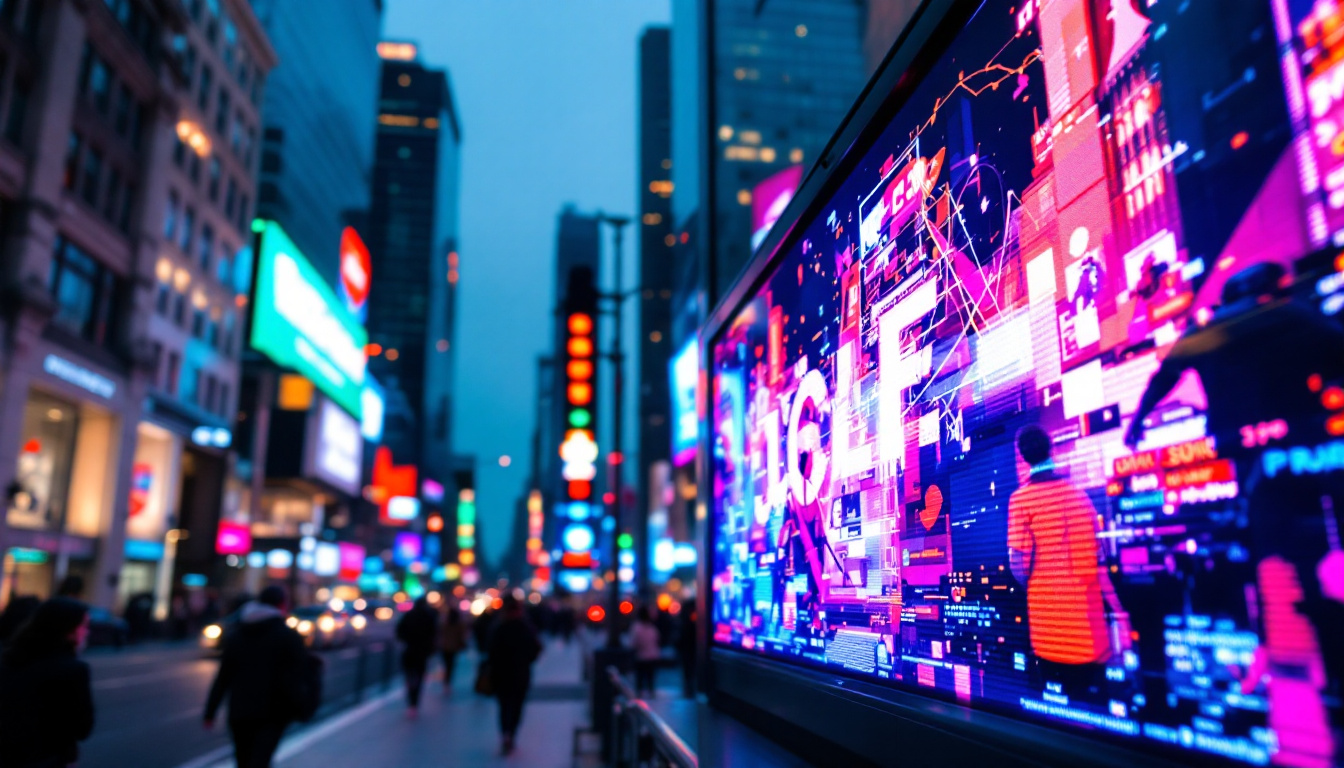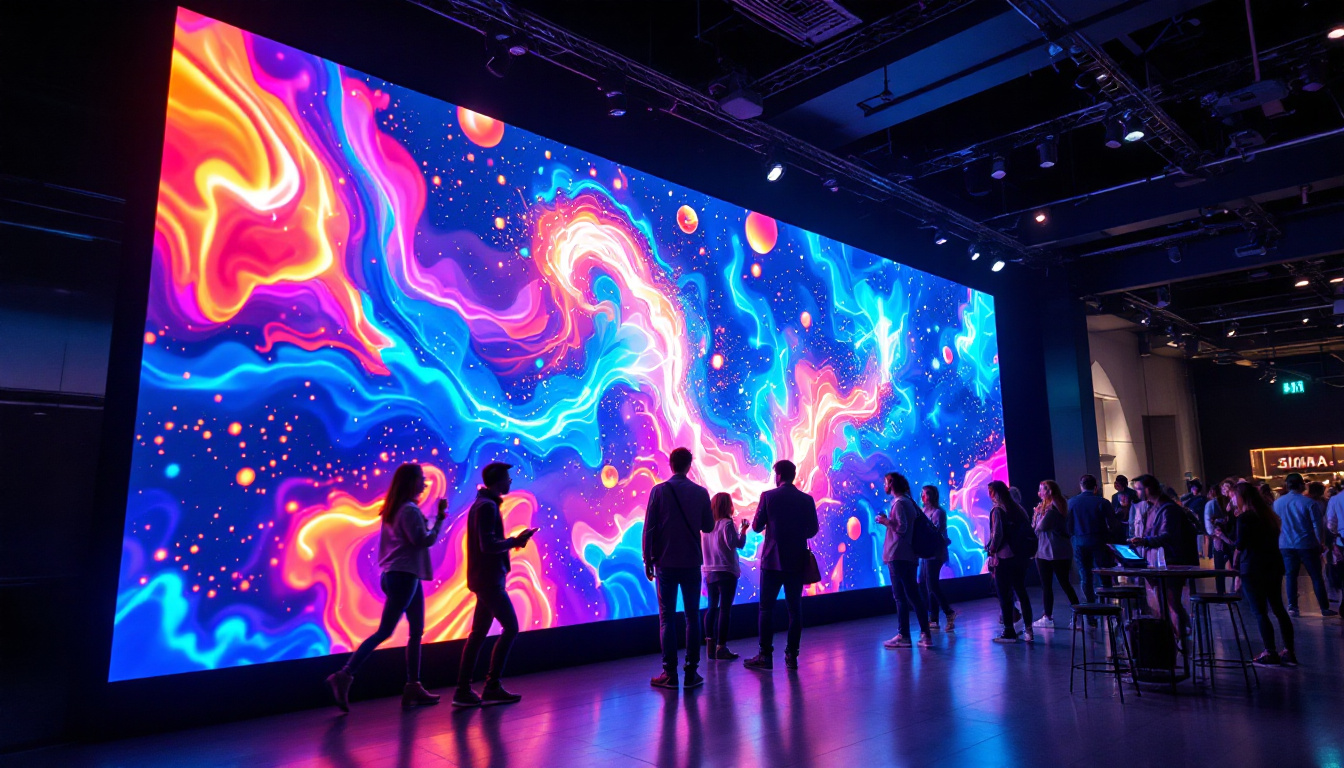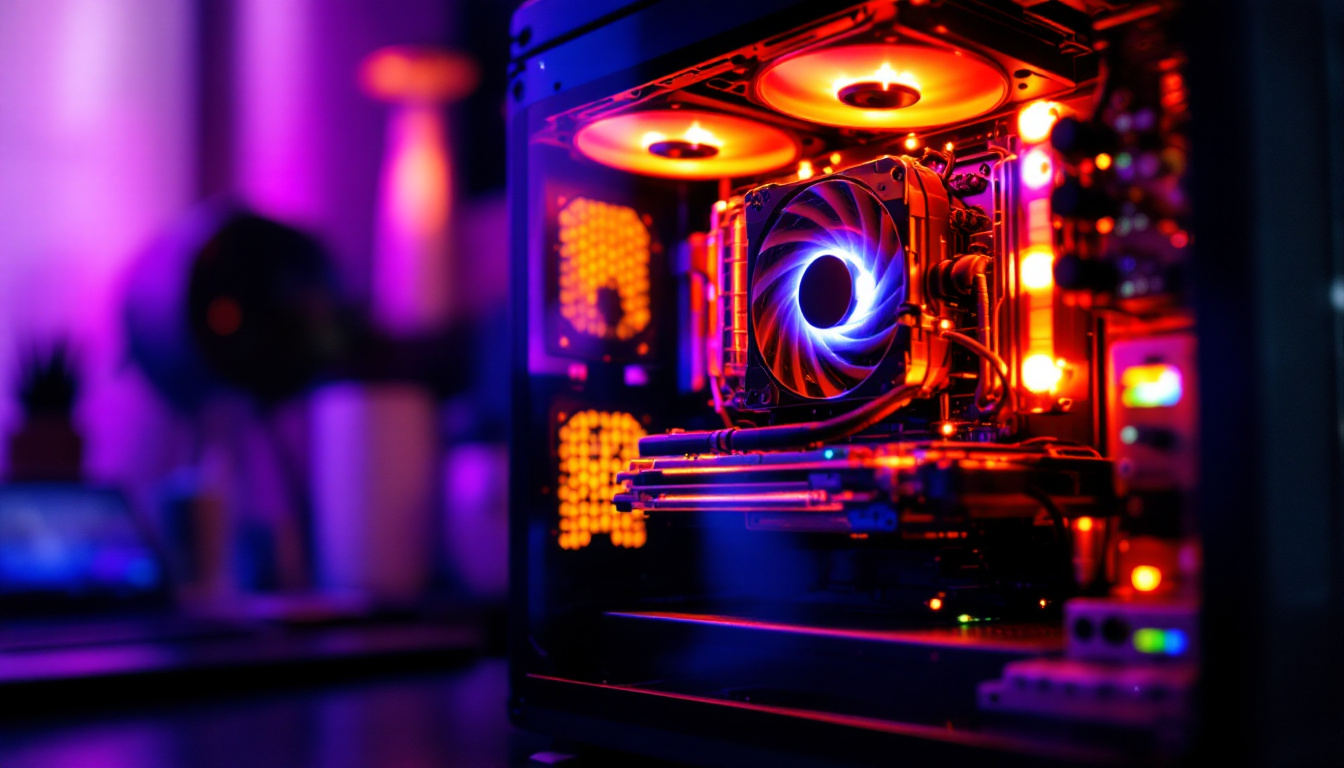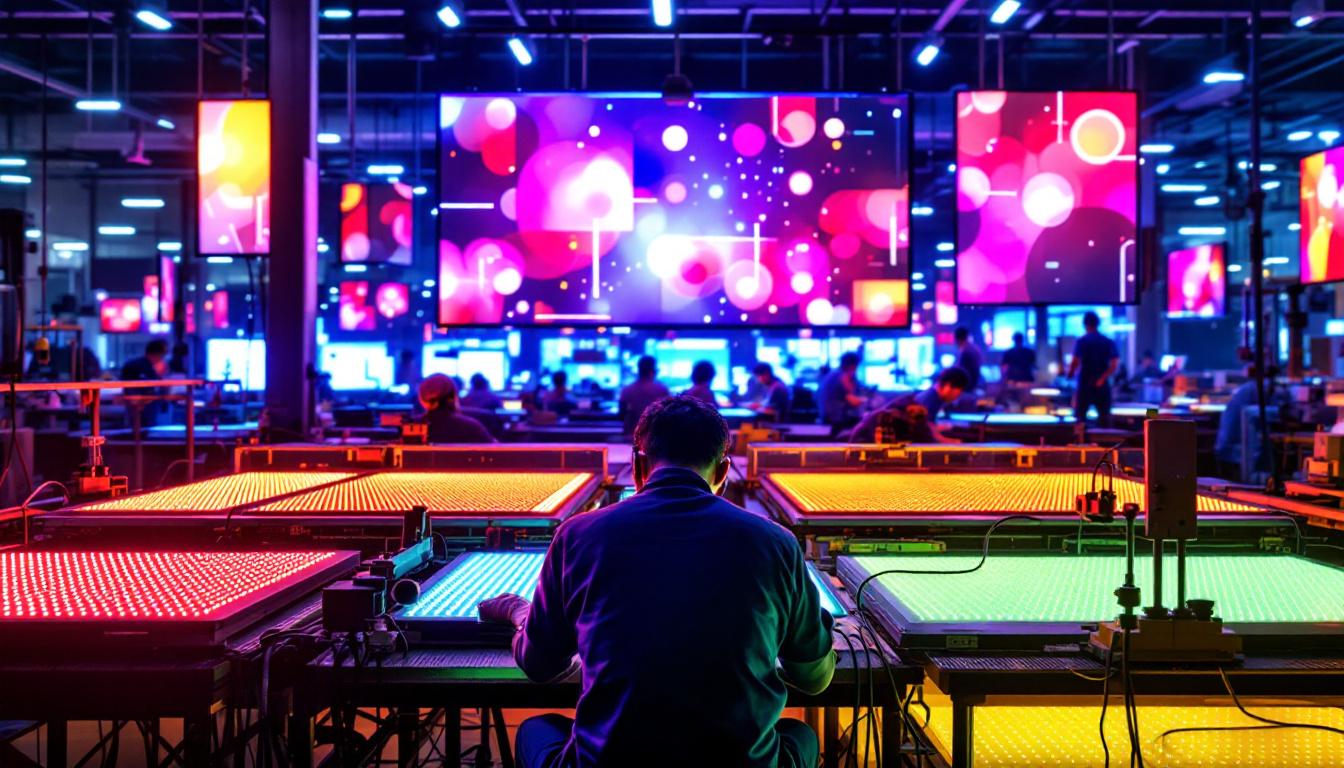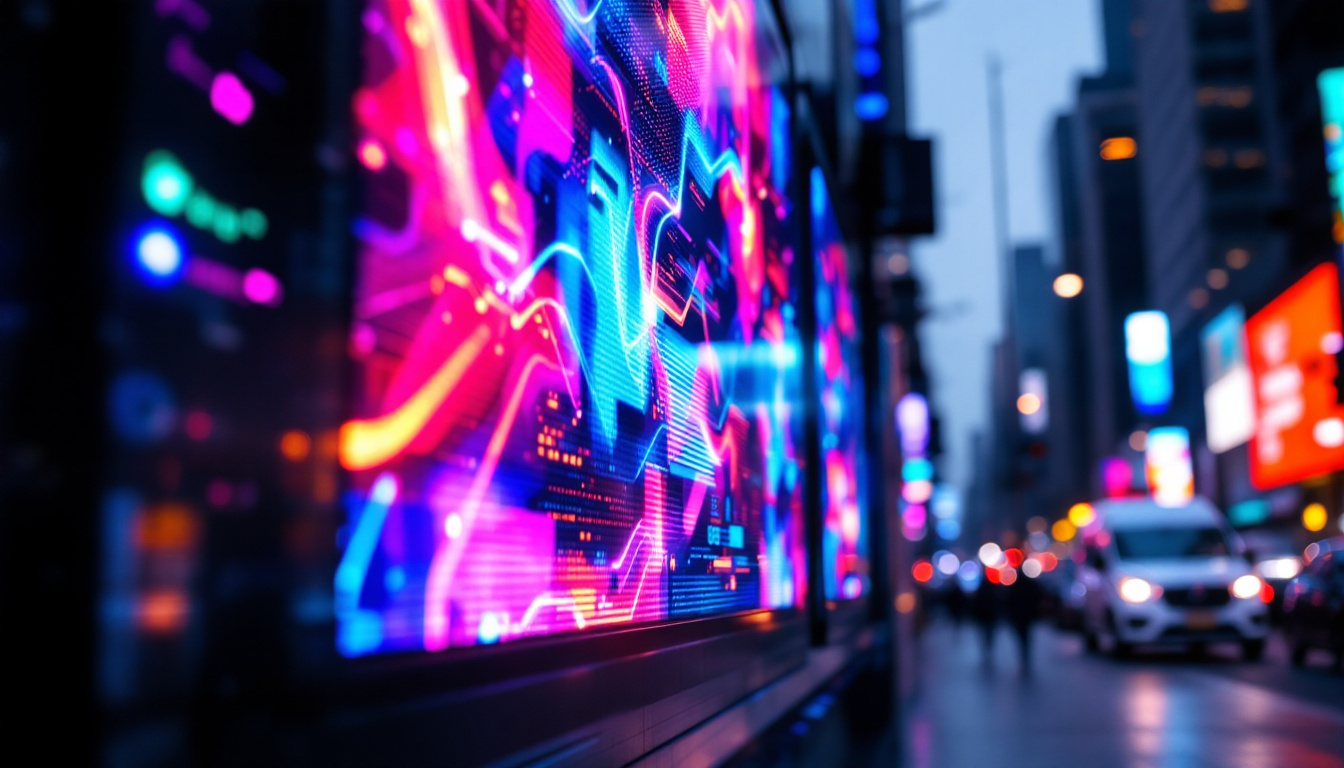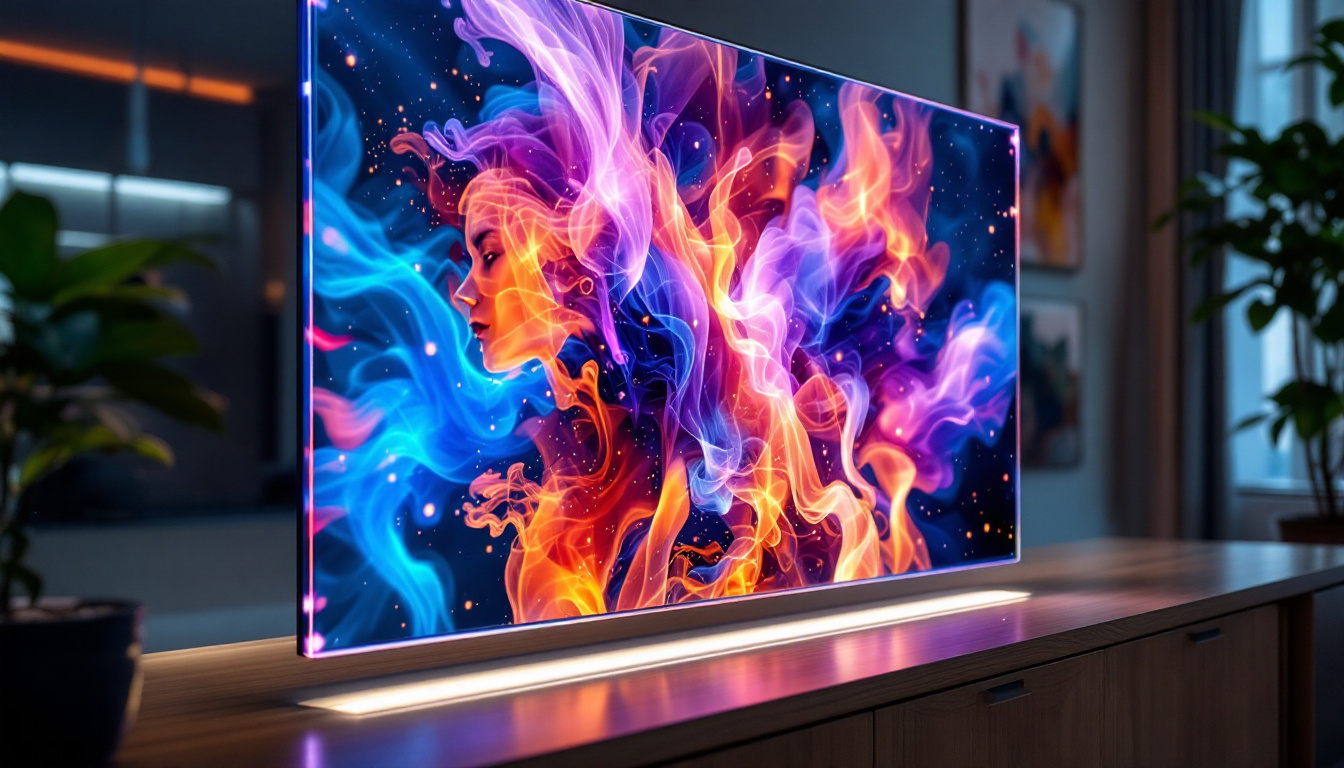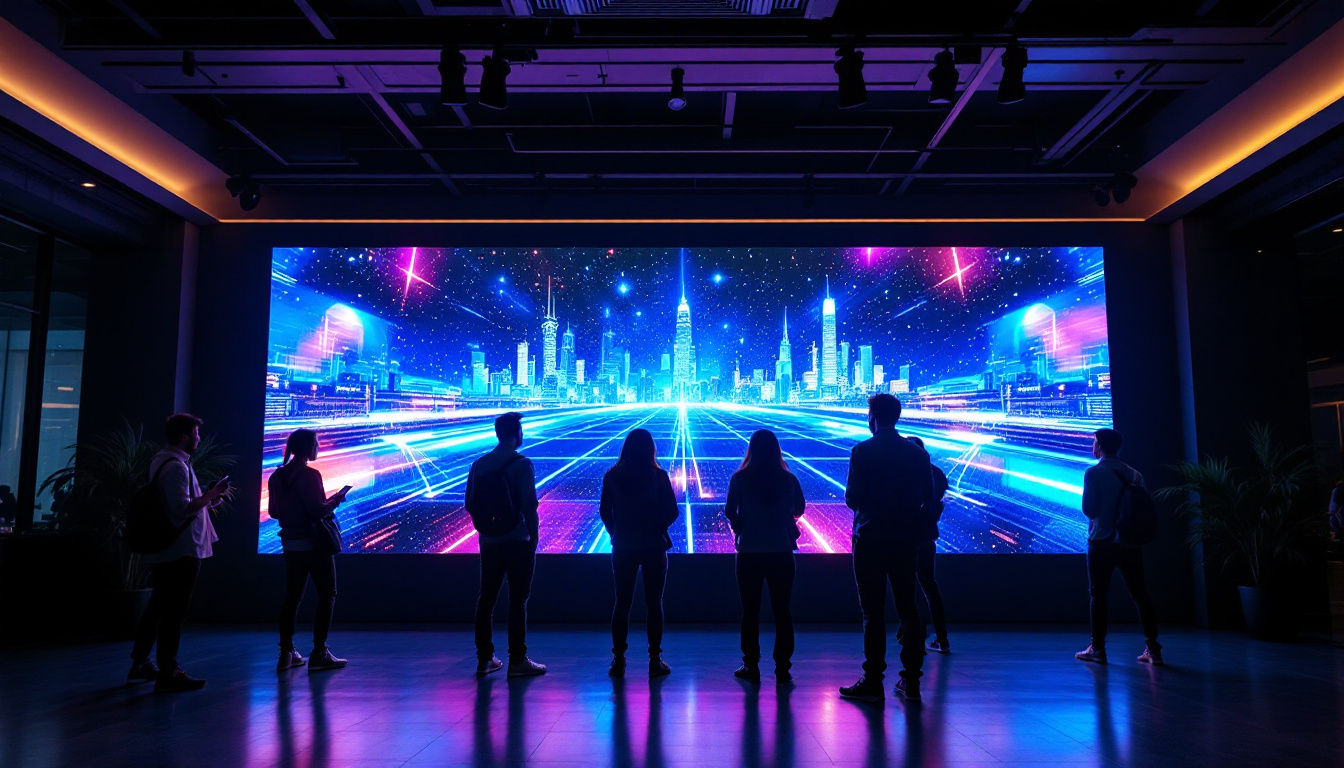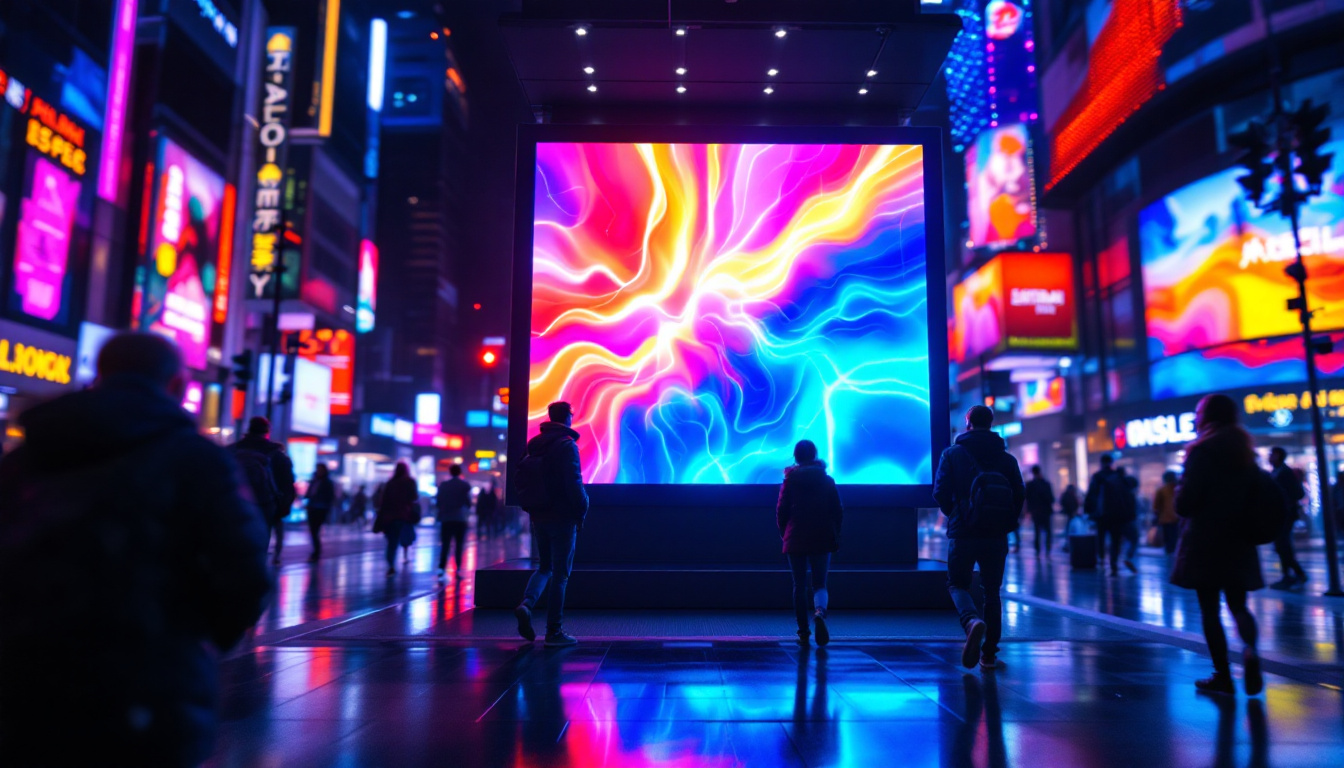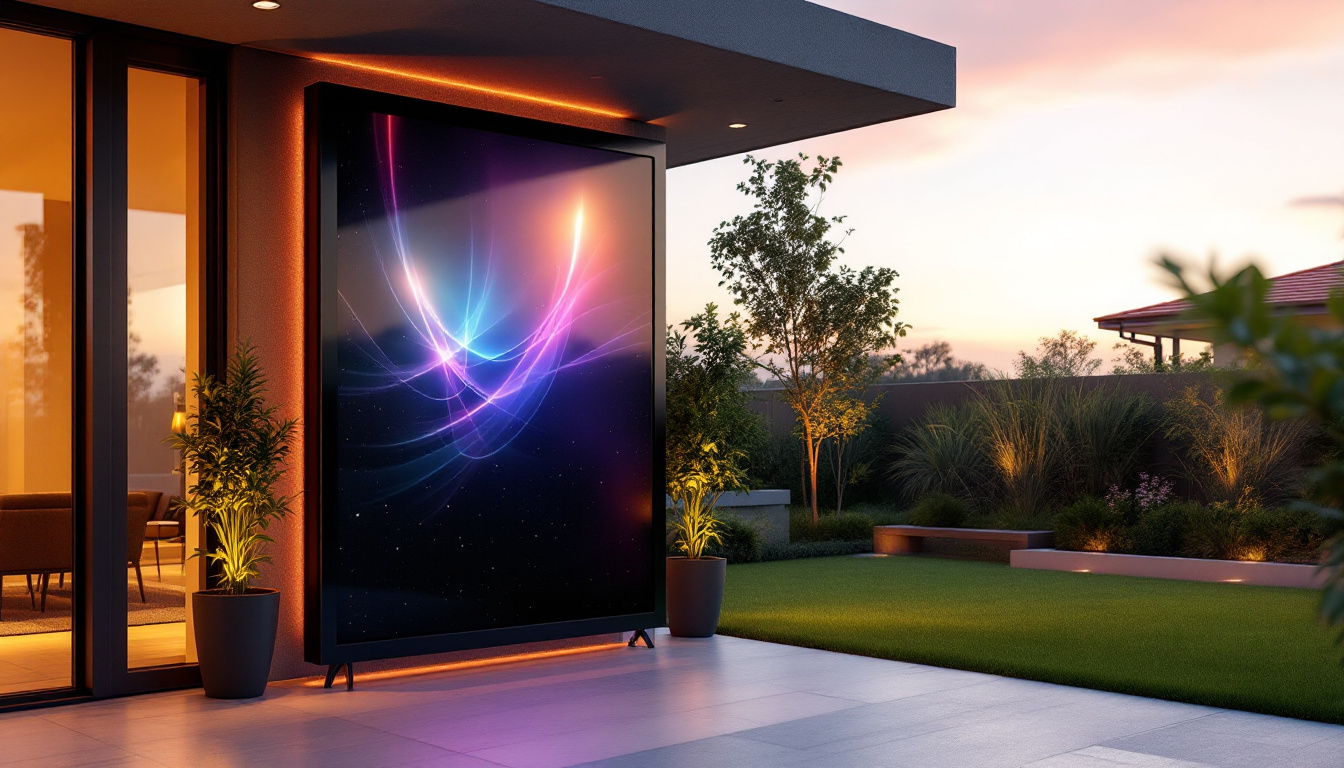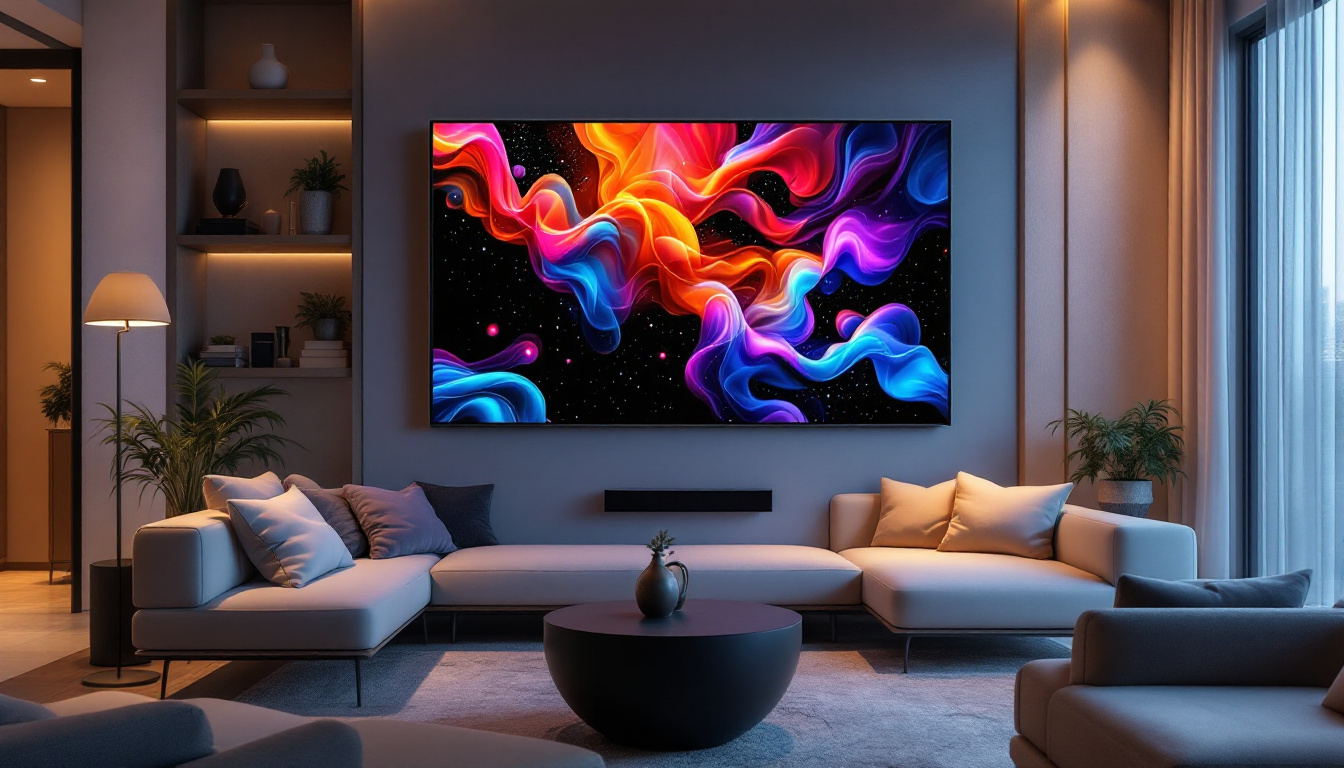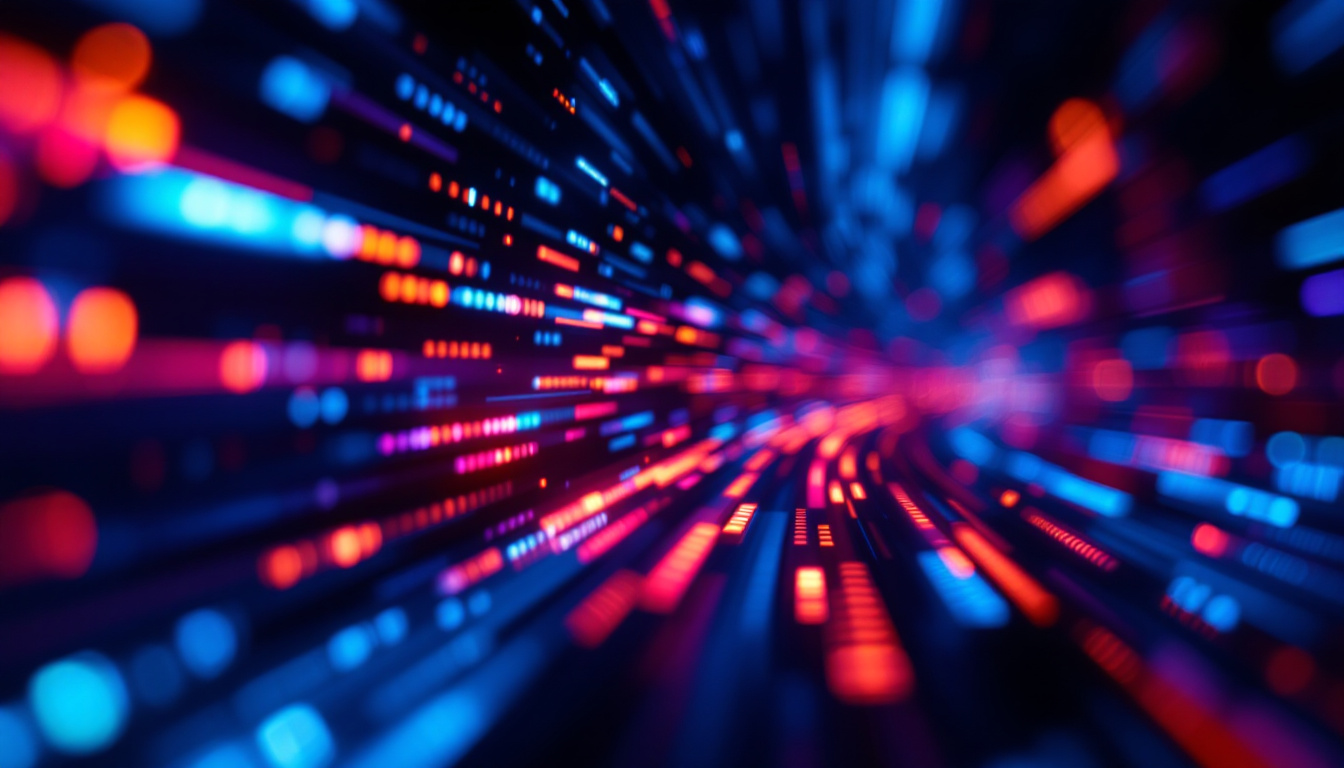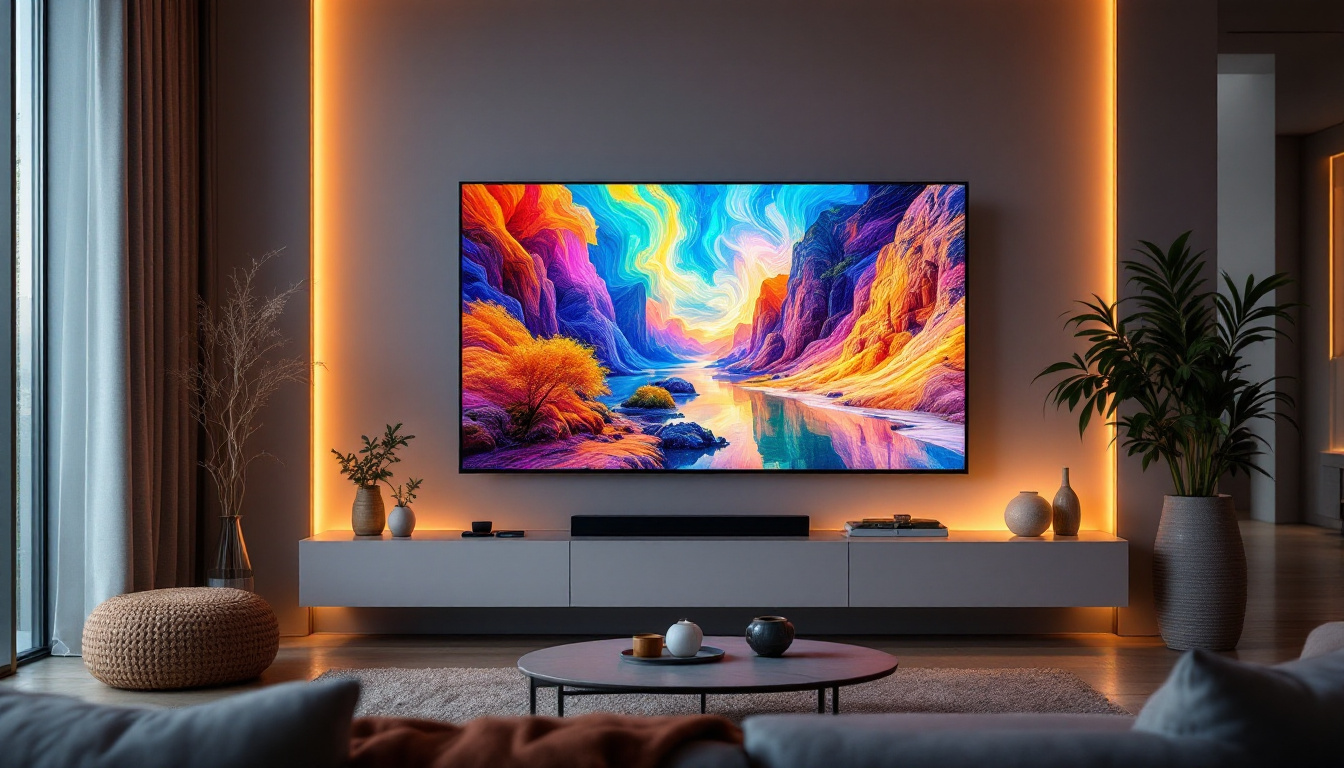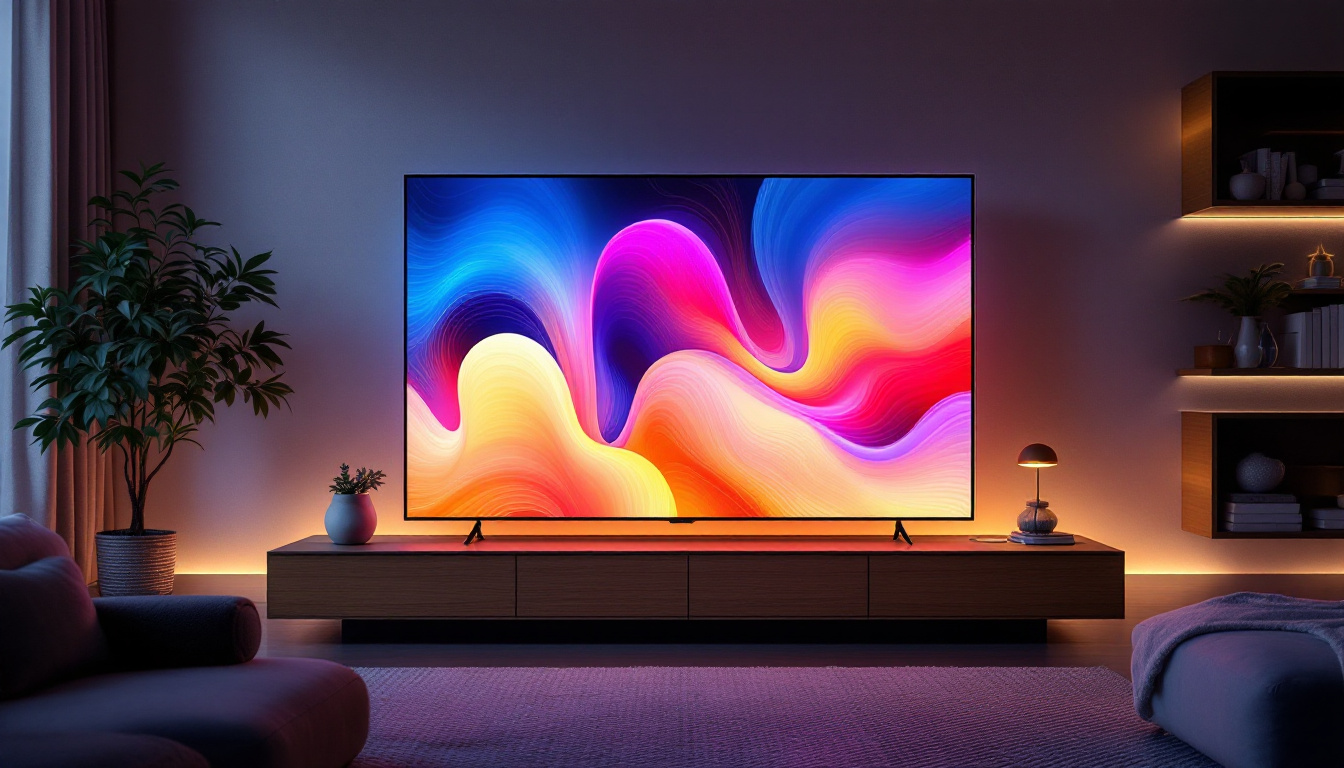In the world of television technology, LED displays have emerged as a dominant force, revolutionizing the way audiences experience visual content. The term “LED” stands for Light Emitting Diode, and this technology has transformed traditional display methods into vibrant, energy-efficient solutions. This article delves into the intricacies of LED displays, exploring their workings, advantages, and the various types available in the market today.
Understanding LED Display Technology
LED displays utilize a series of light-emitting diodes to create images on the screen. Unlike traditional LCD screens that rely on fluorescent backlighting, LED technology incorporates diodes that emit light directly, resulting in brighter and more vivid colors. This fundamental difference not only enhances picture quality but also improves energy efficiency. The longevity of LED displays is another significant advantage, with many models boasting lifespans of over 50,000 hours, which translates to years of uninterrupted viewing pleasure.
How LED Displays Work
The core principle behind LED displays lies in the arrangement of diodes. Each pixel on an LED screen is made up of red, green, and blue diodes. By adjusting the intensity of each color, a wide spectrum of colors can be produced. This capability allows for high contrast ratios and deep blacks, making LED displays particularly appealing for cinematic experiences. Furthermore, advancements in technology have led to the development of Quantum Dot LED displays, which utilize nanocrystals to enhance color accuracy and brightness even further, pushing the boundaries of visual fidelity.
Moreover, LED displays can be categorized into two main types: Direct LED and Edge-Lit LED. Direct LED displays have diodes placed directly behind the screen, providing uniform brightness and better black levels. In contrast, Edge-Lit LED displays position diodes along the edges of the screen, using light guides to illuminate the display. While Edge-Lit models tend to be thinner and more lightweight, they may not deliver the same level of performance as Direct LED displays. Additionally, the growing trend of Mini-LED technology is revolutionizing the market by offering finer control over local dimming zones, significantly improving contrast and detail in dark scenes.
Key Components of LED Displays
Understanding the components of LED displays is crucial for appreciating their functionality. The primary components include:
- LED Backlight: This is the source of illumination for the display, determining brightness and color accuracy.
- Liquid Crystal Display (LCD) Panel: While LED refers to the backlighting, the LCD panel is responsible for modulating the light to create images.
- Control Circuitry: This manages the operation of the display, ensuring that images are rendered accurately and efficiently.
These components work in harmony to deliver the stunning visuals that LED displays are known for, making them a popular choice among consumers and professionals alike. Additionally, the integration of smart technology into LED displays has transformed them into multifunctional devices. Many modern LED displays now come equipped with built-in streaming capabilities, voice control, and connectivity options, allowing users to access a plethora of content seamlessly. This evolution not only enhances the user experience but also positions LED displays as central hubs in today’s smart home environments.
The Advantages of LED Displays
LED displays offer a plethora of advantages that contribute to their widespread adoption. From energy efficiency to superior image quality, these displays have become the preferred choice for both home and commercial use.
Energy Efficiency
One of the standout features of LED technology is its energy efficiency. Compared to traditional LCD and plasma displays, LED screens consume significantly less power. This not only translates to lower electricity bills but also contributes to a reduced carbon footprint, making LED displays an environmentally friendly option.
Image Quality
The image quality produced by LED displays is often superior to that of their predecessors. With higher brightness levels, improved contrast ratios, and a wider color gamut, LED displays can render images with remarkable clarity and vibrancy. This makes them particularly suitable for viewing in well-lit environments, where other types of displays may struggle.
Longevity and Durability
LED displays are known for their longevity. With a lifespan that can exceed 50,000 hours, these displays outlast many traditional technologies. Additionally, LED screens are more resistant to screen burn-in, a common issue with plasma displays, further enhancing their durability. This longevity makes them a cost-effective investment for consumers and businesses alike.
Types of LED Displays
LED displays come in various forms, each designed to cater to specific needs and preferences. Understanding these types can help consumers make informed decisions when selecting a display for their home or business.
Standard LED Displays
Standard LED displays are the most common type found in homes and offices. They utilize either Direct LED or Edge-Lit technology and are available in a wide range of sizes. These displays are ideal for general viewing purposes, offering excellent picture quality and energy efficiency.
OLED Displays
While technically not an LED display, OLED (Organic Light Emitting Diode) technology is often discussed in the same context. OLED displays feature self-emissive pixels, meaning each pixel generates its own light. This results in deeper blacks and more vibrant colors compared to traditional LED displays. However, OLED technology tends to be more expensive and may not be as bright as LED displays in well-lit conditions.
MicroLED Displays
MicroLED technology is an emerging trend in the display market, combining the benefits of LED and OLED. MicroLED displays consist of tiny, individual LEDs that can produce their own light, similar to OLED. However, they offer greater brightness and are less susceptible to burn-in. While still in the early stages of commercialization, MicroLED displays hold great promise for the future of television technology.
Applications of LED Displays
The versatility of LED displays makes them suitable for a wide range of applications beyond just home entertainment. From commercial use to outdoor advertising, LED technology has found its place in various sectors.
Home Entertainment
In the realm of home entertainment, LED displays have become the standard choice for televisions. Their ability to deliver stunning visuals and vibrant colors enhances the viewing experience, making them ideal for movie nights, gaming, and sports events. With advancements in smart technology, many LED TVs now come equipped with features like streaming capabilities and voice control.
Commercial Use
Businesses have also embraced LED displays for advertising and presentations. Digital signage powered by LED technology allows for eye-catching advertisements that can be easily updated. Retailers use LED displays to showcase promotions and product information, while corporate environments utilize them for presentations and video conferencing.
Outdoor Advertising
Outdoor LED displays have revolutionized advertising in public spaces. Billboards and signage that utilize LED technology can capture attention with dynamic content and vibrant colors. These displays are often weather-resistant and designed to withstand the elements, making them ideal for high-traffic areas.
Challenges and Considerations
While LED displays offer numerous benefits, there are also challenges and considerations to keep in mind when selecting a display. Understanding these factors can help consumers make informed choices.
Cost
One of the primary considerations when purchasing an LED display is cost. While prices have decreased over the years, high-end models, particularly those with advanced features like 4K resolution or OLED technology, can still be quite expensive. Consumers should weigh the benefits against their budget to find the best option for their needs.
Viewing Angles
Another challenge associated with LED displays is viewing angles. While many modern LED screens offer improved viewing angles, some models may still exhibit color distortion or reduced brightness when viewed from the side. This is particularly important for larger screens or setups where multiple viewers will be watching from different angles.
Color Accuracy
Color accuracy can vary between different LED display models. Some displays may oversaturate colors or struggle to reproduce certain shades accurately. For professionals in fields such as graphic design or photography, this can be a significant concern. It is essential to research and consider color performance when selecting an LED display for specific applications.
The Future of LED Display Technology
The future of LED display technology looks promising, with ongoing advancements and innovations on the horizon. As technology continues to evolve, consumers can expect even better performance, enhanced features, and new applications.
Advancements in Resolution
With the rise of 4K and 8K resolution displays, LED technology is adapting to meet the demands for higher pixel density. As content becomes available in ultra-high-definition formats, manufacturers are developing LED displays capable of delivering stunning detail and clarity. This trend is likely to continue, pushing the boundaries of what is possible in display technology.
Integration with Smart Technology
As smart home technology becomes increasingly prevalent, LED displays are also evolving to incorporate smart features. Many modern LED TVs now come equipped with built-in streaming services, voice control, and compatibility with smart home devices. This integration enhances the user experience and allows for greater convenience in accessing content.
Environmental Considerations
As sustainability becomes a growing concern, manufacturers are focusing on creating more environmentally friendly LED displays. This includes using recyclable materials, reducing energy consumption, and improving the overall lifespan of products. Consumers can expect to see more eco-friendly options in the market as awareness of environmental issues continues to rise.
Conclusion
LED display technology has transformed the way we experience visual content, offering a combination of vibrant colors, energy efficiency, and longevity. With various types of LED displays available, consumers can choose the option that best suits their needs, whether for home entertainment, commercial use, or outdoor advertising. While challenges exist, ongoing advancements in technology promise a bright future for LED displays, ensuring that they remain at the forefront of television technology for years to come.
As the landscape of display technology continues to evolve, understanding the intricacies of LED displays will empower consumers to make informed decisions, enhancing their viewing experiences and meeting the demands of an increasingly digital world.
Discover LumenMatrix’s Innovative LED Display Solutions
Ready to elevate your visual experience with the latest in LED display technology? Look no further than LumenMatrix, a pioneer in crafting LED display modules that bring your content to life. Whether you’re in need of an Indoor LED Wall Display for a corporate event, an Outdoor LED Wall Display for impactful advertising, or any of our specialized solutions like Vehicle LED Displays and LED Sports Displays, LumenMatrix has you covered. Our mission is to revolutionize visual communication with digital signage that engages and captivates. Don’t miss out on the opportunity to transform your space and captivate your audience. Check out LumenMatrix LED Display Solutions today and step into the future of display technology.

